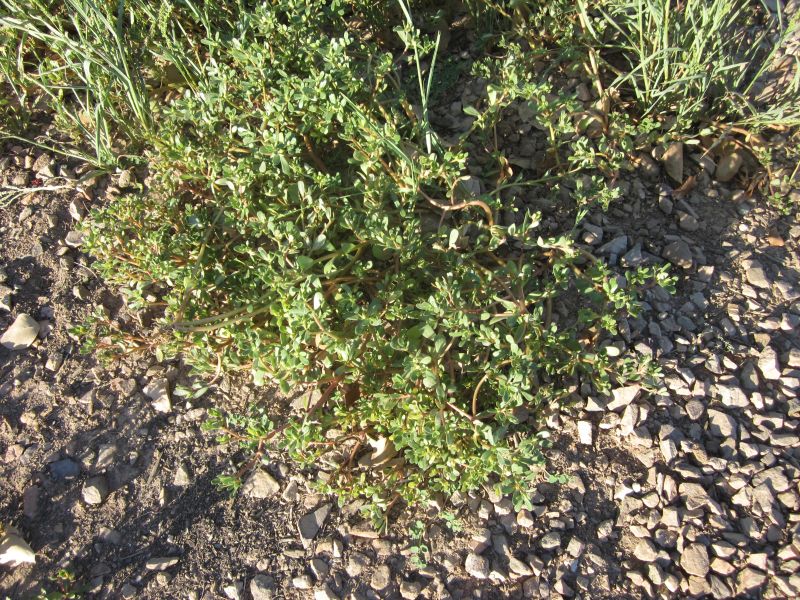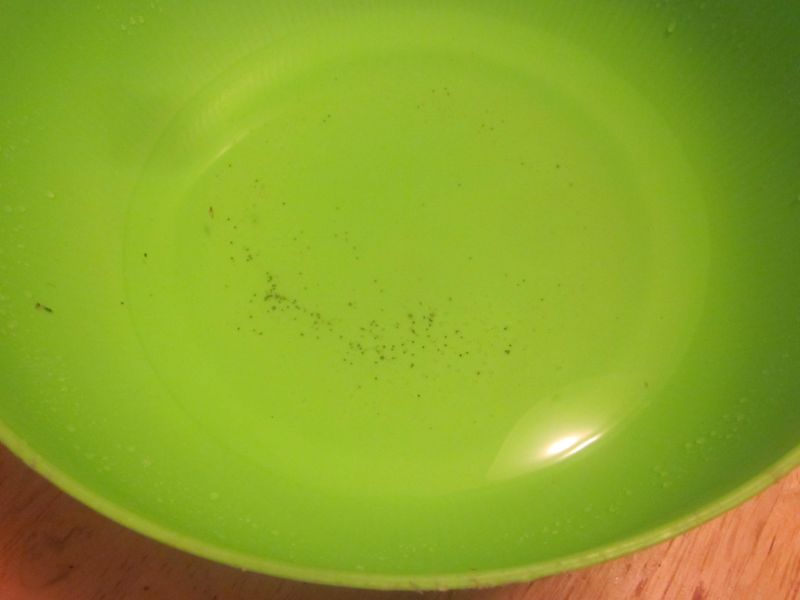Getting Started: Harvesting and Preparing Purslane

So you’re thinking that you may actually try eating some purslane. What should you expect? Really, it’s not that strange. The taste is somewhere between watercress and spinach. Eaten raw, the leaves are quite succulent, though the stems can be a be slightly mucilaginous (slimy like okra) if not cooked. I don’t mind it, but then I also have no problem with okra, flax seed or chia seed either. When cooked, it becomes a soft vegetable with a texture similar to cooked cabage.
But before moving on to actual recipes for purslane, I want to take a minute to explain its harvesting and preparation.
The very first thing you must remember is do not use plants that have been sprayed. You do not want to get sick from ingesting poison, and I don’t want you blaming the purslane for your problems, rather than the real cause: ~~ The Devil~~ I mean Monsanto. When in doubt, throw it out. I don’t give this advice lightly. I hate wasting food, even when it’s free food that showed up uninvited in places that get me in trouble with the HOA. And don’t give it to the chickens or put it in the compost heap either. That stuff is bad news!
However, if it hasn’t been sprayed, and you don’t end up eating it, by all means, recycle it through the digestive system of your chickens, or your worms, or your compost pile’s various beneficial critters. Purslane could be classified as a super food (see the first article in this series for more information), and when you feed it to other things, they produce super food too.
In general, it’s best to use younger plants with brilliant green leaves, which are more tender and flavorful, rather than older, larger specimens with larger and more reddish stems, which can be somewhat woody. That being said, don’t be too worried. Harvest what you have.
Remove any roots, then depending on the recipe and your personal preferences, you may want to remove the larger stems. Some recipes even call for only leaves, though I’m generally too lazy to pluck leaves; I just trim it down to small stems and leaves and then coarsely chop it. But we’ll get to those kinds of directions in the individual recipes.
After you’ve got the purslane trimmed up a bit, place it in a colander to wash. Spray it down with a generous amount of cold water, turning it over as you do so. Purslane is a low-lying plant, so it can pick up a lot of dirt, leaves and other debris.

Here’s a trick I learned on the first purslane page I visited: when you wash it, place the colander inside another bowl to catch the wash water. When you’re done washing the purslane, the outer bowl will be full of seeds. You can use this water in your garden (provided you actually want to cultivate purslane there) or anywhere else you want to sow the seeds of summer abundance. I threw mine in my mini aquaponics system in the garage, so we’ll have to see how that works. (Also, I’ll have to do an article about how I made the aquaponics system at some point in the future, so check back.)

That’s about all there is to it. Let me know if you have any questions, and stay tuned for tomorrow’s post when I finally get into cooking this wonderful weed.